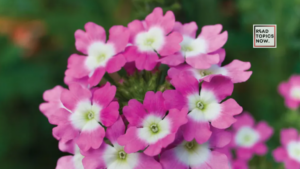
How to Design a Low-Maintenance Garden for Busy People

WhatsApp
Facebook
Twitter
LinkedIn
How to Design a Low-Maintenance Garden for Busy People
A beautiful garden can be a source of relaxation and joy, but for many busy people, the time and effort required for upkeep can be overwhelming. Gardening demands regular attention—watering, weeding, trimming, and planting—which can become a chore for those juggling work, family, and social commitments.
The good news is that you don’t have to sacrifice the beauty of your outdoor space just because you don’t have hours to spend on maintenance. Designing a low-maintenance garden is all about choosing the right plants, materials, and layout to create a beautiful space that doesn’t require constant upkeep.
In this article, we’ll explore practical strategies and tips for designing a low-maintenance garden, from selecting hardy plants to implementing smart landscaping solutions. Whether you’re a gardening newbie or a seasoned pro, these tips will help you create a stunning garden that requires minimal care.
1. Start with a Simple Garden Design
The foundation of a low-maintenance garden lies in its design. Simplicity is key. Avoid overly intricate layouts that require frequent replanting, pruning, or managing a variety of different plant species.
Tips for a Simple Design:
Use clean lines: Straight lines, simple geometric shapes, and minimalistic pathways can make your garden easier to manage.
Limit the plant variety: Choose a few types of plants that thrive in your climate and need less attention.
Incorporate large areas of lawn or ground cover: These spaces require less maintenance than flower beds, and they provide a clean, open look.
Design Ideas:
Create a gravel garden or rock garden to minimize the need for watering and weeding.
Incorporate hardscaping elements like paved patios, garden sculptures, or decorative stones to reduce planting space.
2. Select Low-Maintenance Plants
When selecting plants for your garden, opt for varieties that are native to your area, as they are well-suited to your climate and require less watering, fertilizing, and pest control. Avoid high-maintenance plants that need constant attention or are susceptible to disease.
Low-Maintenance Plants to Consider:
Perennials: These plants come back year after year, eliminating the need for replanting each season.
Examples: Hostas, lavender, sedum, and daylilies.
Succulents and Cacti: These drought-tolerant plants require minimal watering and can thrive in many garden settings.
Examples: Aloe vera, echeveria, and agave.
Ornamental grasses: Many grasses are hardy and need little to no care once established.
Examples: Blue fescue, pampas grass, and feather reed grass.
Native plants: These plants are adapted to your local climate and often require less water, fertilizer, and maintenance.
Examples: Black-eyed susan, coneflower, and prairie dropseed.
Consider the Growing Conditions:
Sunlight: Choose plants that thrive in the amount of sunlight your garden receives.
Soil Type: Select plants suited for your soil type (clay, sandy, loamy, etc.).
Watering Needs: Group plants with similar watering requirements to avoid overwatering or underwatering.
3. Use Mulch to Reduce Weeds and Retain Moisture
Mulching is one of the easiest ways to reduce maintenance in your garden. A layer of mulch helps suppress weeds, conserve moisture, and regulate soil temperature. It also adds a finished look to garden beds and can improve the soil quality over time as it decomposes.
Types of Mulch:
Wood Chips or Bark: A classic choice that provides a natural look and long-lasting coverage.
Gravel or Pebbles: Excellent for dry gardens and areas with little rainfall.
Shredded Leaves: A cost-effective, environmentally friendly option.
Rubber Mulch: Made from recycled tires, rubber mulch is durable and doesn’t decompose like organic mulches.
Tip: Apply mulch around trees, shrubs, and flower beds, ensuring that it’s a few inches deep but doesn’t touch the plant stems directly to prevent rot.
4. Choose Hardscaping Features Over Plants
Hardscaping refers to the non-plant elements in your garden, such as paths, patios, retaining walls, and garden structures. Adding more hardscaping elements to your garden reduces the need for regular plant care and can make your outdoor space more functional and visually appealing.
Hardscaping Ideas:
Gravel paths or stepping stones: They require very little maintenance and look great in a variety of garden styles.
Decks and patios: Use them as outdoor living areas that don’t need frequent upkeep.
Decorative rocks and boulders: Great for adding texture and visual interest without needing much care.
Pergolas or garden structures: These elements provide shade and interest and can serve as focal points in your garden.
5. Install Automatic Irrigation Systems
One of the most time-consuming tasks in garden maintenance is watering. Installing an automatic irrigation system can save you time and ensure that your plants get the right amount of water without over or under-watering.
Types of Irrigation Systems:
Drip irrigation: Delivers water directly to the roots of plants, minimizing water waste and reducing the risk of fungal diseases.
Sprinkler systems: Best for larger gardens or lawns, they can be set to run at specific times of the day and are adjustable for different garden areas.
Soaker hoses: Perfect for garden beds, soaker hoses allow water to seep directly into the soil without runoff.
6. Create a Maintenance Schedule
Even low-maintenance gardens require some attention from time to time. Creating a maintenance schedule can help ensure that your garden stays in good shape without requiring too much of your time.
Tasks to Include:
Monthly weeding: While mulch will reduce weed growth, occasional weeding is still necessary.
Bi-weekly watering: Even low-maintenance plants may need water during dry spells.
Annual pruning: Trim dead or overgrown branches to encourage healthy growth.
Seasonal cleanup: In the fall, clean up fallen leaves and prepare your garden for winter.
Tip: Delegate tasks where possible. If your garden becomes too large or complex, consider hiring a gardener for occasional upkeep.
7. Consider Low-Maintenance Lawn Alternatives
Traditional grass lawns can require a lot of upkeep, including mowing, watering, and fertilizing. Consider replacing part or all of your lawn with low-maintenance alternatives that require less care.
Lawn Alternatives:
Clover lawns: Clover is low-growing, requires little water, and doesn’t need mowing as frequently.
Groundcovers: Plants like creeping thyme or ground-hugging sedums form a dense mat and require minimal attention.
Artificial turf: If you want a green lawn without the maintenance, artificial turf is a no-fuss alternative.
FAQs About Low-Maintenance Gardening
1. What is the easiest garden to maintain?
The easiest gardens to maintain are those that use native plants, low-maintenance shrubs, and hardy perennials. Incorporating hardscaping elements like gravel paths or stone patios also reduces upkeep.
2. How do you keep a garden low-maintenance?
To keep a garden low-maintenance, choose drought-resistant plants, install an irrigation system, use mulch, reduce lawn areas, and incorporate more hardscaping. A simple garden design with limited plant varieties also reduces the need for constant care.
3. What plants require the least amount of maintenance?
Plants that are drought-tolerant and resistant to pests and diseases require less care. Examples include succulents, ornamental grasses, lavender, and native plants suited to your climate.
4. How can I reduce weeding in my garden?
Weeding can be reduced by applying mulch around your plants and in garden beds. Using weed barriers, like landscape fabric or a thick layer of organic mulch, can also help suppress weed growth.
5. How can I maintain a garden while on vacation?
To maintain your garden while away, consider installing an automatic irrigation system, ask a neighbor to water your plants, or use self-watering pots. If you’re going for an extended period, consider planting drought-resistant or low-maintenance plants.
Conclusion
Designing a low-maintenance garden is a great way to enjoy the benefits of nature without spending hours each week on upkeep. By selecting hardy plants, reducing lawn areas, incorporating efficient irrigation systems, and simplifying your garden design, you can create an outdoor space that thrives with minimal effort. Whether you’re a busy professional, a parent, or someone simply looking to reduce your garden workload, a low-maintenance garden allows you to relax and enjoy the beauty of nature, all while saving time and energy.

As a content writer, I specialize in crafting engaging narratives that captivate, inform, and inspire audiences. Let’s create compelling content together.






